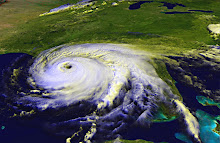She was without power for more than 24 hours because of a thunderstorm.
LIGHTING OPTIONS
It's always good to have back-up lighting in your home. A simple battery-operated flashlight can be purchased for a few dollars at stores like Wal-mart, Target, Home Depot or Lowe's. A flashlight with 5 or 6 LED bulbs can give you enough light to get around and do simple tasks.
For prolonged outages or if you anticipate having to do things that require two hands (change a diaper, prepare an insulin injection, deal with storm damage) it's nice to have a hands-free lantern. They're a little more expensive and take a larger battery, but they put out more light and don't have to be held and aimed.
Rechargeable flashlights are great, but in a prolonged outage, where will you recharge it? If you have a generator, you can plug in the flashlight and your cell phone at the same time as you're cooling your fridge. During the last few major hurricanes, I was working at a TV station with a huge generator that served the entire building. I think we all brought rechargeable items from home.
Check in the camping section of a department or sporting goods store for a good selection of more expensive lanterns. Some of the camping lanterns burn LP gas and give off very bright light. If you can afford it, you'll be glad to have it when the lights are off for an extended period of time.
BARGAIN HUNTING
You can spend hundreds of dollars on a flashlight or lantern, but it's not necessary. Twenty dollars will get you several small flashlights that will get you through an emergency. If you don't already have some around the house, start watching for sales. Summer is a popular time for camping, and we're also getting close to Father's Day, so you may find some good deals if you keep your eyes open for them. Between Thanksgiving and Christmas, you can sometimes find gift packs of small LED flashlights at the hardware stores; they usually package five or six small flashlights for under $10.
CARE FOR YOUR BATTERIES
When you have battery-operated items stored for long periods, remove the batteries or at least check them regularly. We don't have central air, and we've had batteries burst from the heat. The battery acid can render your device useless and make a mess in the drawer or cupboard where the device is stored.
Check your storehouse of batteries and/or LP gas regularly. Make sure that you have viable materials when you need them. Also be sure that the flashlight or lantern and its batteries are easy to find in a blackout. You don't want to be rummaging through a drawer or box in the dark trying to find the flashlight and load the batteries.
THE DANGERS OF CANDLES
Finally, a few words of warning about open flames:
- Keep burning candles or lanterns in a clear area where the flame cannot ignite nearby materials. A dried floral arrangement on the mantle may be pretty, but it's also highly flammable. Curtains can blow in the wind. A candle placed on the floor near the bed could set a wayward sheet or blanket on fire.
- Never leave an open flame unattended. Not only does it increase the risk of an accidental fire, but if you have children or pets, they could be attracted to the flame and burn themselves.

No comments:
Post a Comment